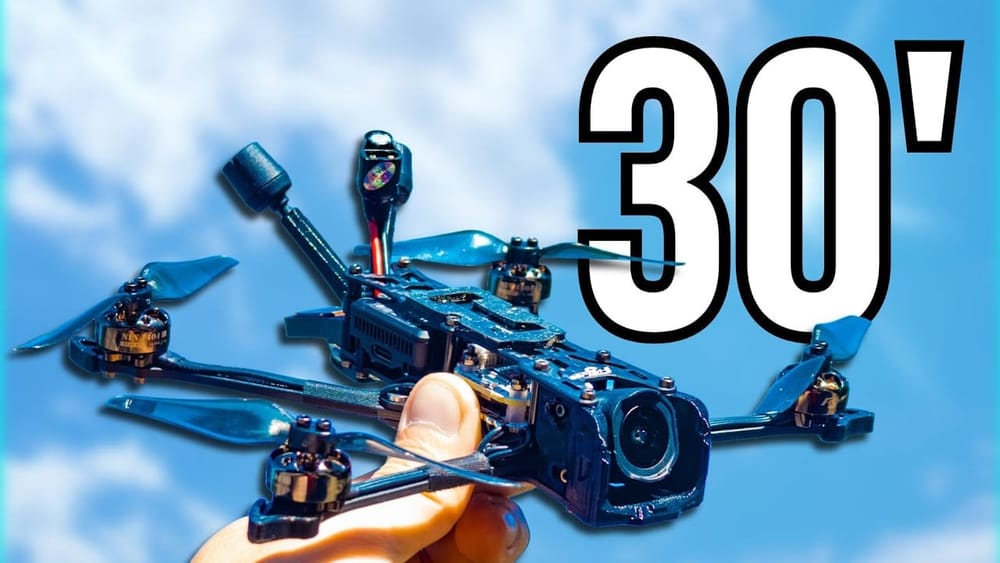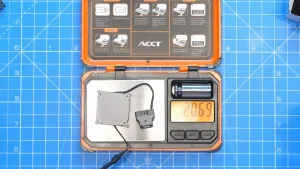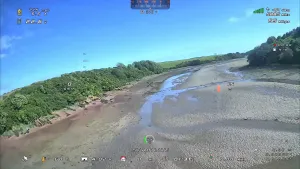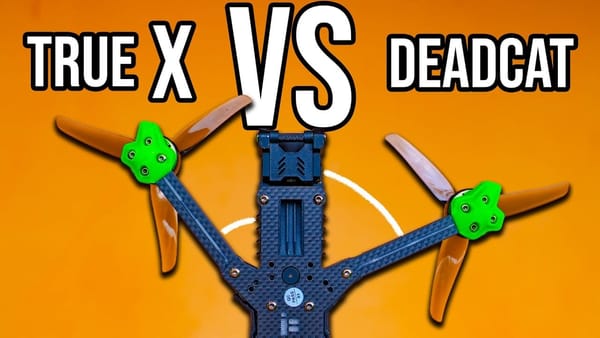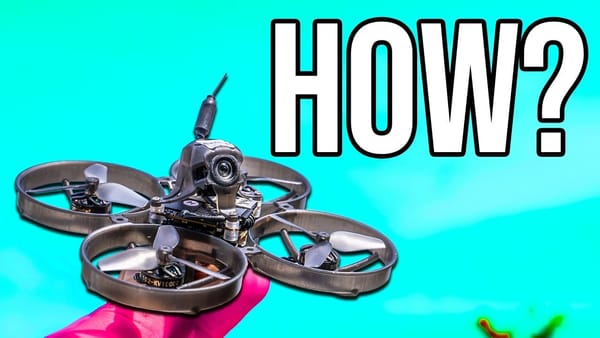
The Flywoo Explorer LR 4 inch drone promises long flight times while staying under the 250g limit. But does it deliver on endurance without sacrificing performance? Rimzler takes it for a spin to find out.
Unboxing and First Impressions
The Flywoo Explorer LR arrives wrapped neatly with a hefty accessory bag. Included are two sets of Gemfan 4024 bi-blade props, carbon fibre arm braces, a sticky battery pad, a spare 3D-printed VTX antenna mount, and a long-range antenna for the bottom of the drone. There's also a bounty of extra hardware and screws, which is always welcome.
This particular unit comes without the camera pre-installed, but adding the DJI O4 Pro camera is straightforward, requiring just a couple of screws. Rimzler notes that the frame and motors remain unchanged from the original analog Flywoo Explorer, retaining the efficient 1404 2750KV motors paired with bi-blade props.
Hardware Updates and Design Choices
The drone now sports a soft TPU canopy designed for the DJI O4 Pro system. Its all-up weight clocks in around 177 grams with the camera installed, leaving room for a 750mAh battery to keep it comfortably under the 250g regulatory limit. Rimzler estimates a flight time exceeding ten minutes on this setup.
A standout feature is the buzzer with an integrated battery and LED, allowing the drone to beep and flash for up to five hours even if the main battery disconnects—great for hunting down a lost quad.
The GPS module has been upgraded to a speedy M10 unit, notably without a magnetometer, and the GPS wiring is shielded with copper to reduce interference. The flight controller is a beefy F7 with 45A 32-bit ESCs, though Rimzler questions why Flywoo didn’t opt for a single-board solution to save weight on a sub-250g machine.
One clever addition is a 10V battery-limiting circuit for the DJI system. This lets you toggle the VTX on and off via a radio button, preventing overheating while waiting for satellites. The flight controller connectors have pull tabs for extra security—no mid-flight unplugging here.
Camera and Antenna Setup: Pros and Cons
Rimzler swapped out the Express LS receiver to use the integrated DJI receiver, bringing the total weight down to 171 grams. However, he isn't thrilled with the camera angle, which maxes out around 10-15 degrees—too flat for faster flying. A mod to adjust the camera mount could fix this.
The antenna mounting system raised some eyebrows. Stock, the antenna wire must be routed through a tight channel, risking damage. Rimzler carefully cut the mount to create an easier channel without opening the VTX, maintaining a solid fit.
Flight Tests: Battery Choices and Handling
The first flight used a 650mAh 4S battery, pushing the drone right to the 250g limit. The second flight switched to an 850mAh 4S, increasing weight to 268g. The Explorer LR can handle even larger batteries, including 1000-2000mAh packs and lithium-ion cells, potentially stretching flight times to 30 minutes.
Despite a distracting lizard cameo and Rimzler’s hay fever struggles, the drone proved stable and quiet in the air. The flat camera angle limits speed perception, but the drone cruises smoothly. However, it lacks authority when throttling down, a known downside of bi-blade props.
Performance and Flight Characteristics
The drone feels loose on the sticks and somewhat lazy responding to inputs. Throttle-up causes a noticeable flutter, confirming the Explorer LR’s role as a slow, efficient cruiser rather than a freestyle machine.
Rimzler compares it to the Nexa 3.5, which balances efficiency with freestyle capability better. The Explorer LR focuses on long-range cruising with big batteries and slow speeds. It struggles a bit in wind and lacks raw power, but that’s a trade-off for extended flight time.
GPS Woes and Flight Time Reality
The GPS performance was inconsistent, often showing only three satellites despite factory settings being correct. Rimzler suspects the GPS placement under VTX antennas might be to blame. Other drones, like the Gepard C, place GPS modules more prominently and achieve better satellite lock.
Flight times with the 650mAh battery hovered around 8 minutes, while the 850mAh battery extended this to around 9-10 minutes. Rimzler advises keeping throttle high to maintain stability and avoid flutter.
Final Thoughts: Specialist Tool for Long-Range Sub-250g Flights
The Flywoo Explorer LR 4" DJI O4 Pro excels at what it’s designed for: long-range, efficient flights under 250 grams. It’s not a freestyle or speed demon. Maneuverability and rapid responsiveness take a backseat to battery endurance and signal range.
If you want a versatile freestyle quad, a 3.5-inch drone might be a better choice. But for slow, stable, long-range cruising with HD video and up to 30 minutes of flight time on lithium-ion packs, the Explorer LR is a solid pick.
Rimzler recommends the drone for pilots who prioritise endurance and signal quality over aggressive flying. The GPS issues and camera angle could be improved, but overall it’s a highly specialised machine that does its job well.
FAQ
What is the Flywoo Explorer LR's weight with camera and battery?
With the DJI O4 Pro camera installed, the drone weighs about 177 grams. Adding a 750mAh battery keeps it comfortably under the 250g limit.
How long can the Flywoo Explorer LR fly on a single charge?
Flight times exceed 10 minutes on a 750mAh battery and can reach up to 30 minutes using larger lithium-ion packs.
Is the Flywoo Explorer LR suitable for freestyle flying?
No. It’s designed for slow, efficient cruising and long-range flights. Its handling is loose, and it lacks the power and responsiveness freestyle pilots expect.
Does the Flywoo Explorer LR have GPS functionality?
Yes, it uses an upgraded M10 GPS module. However, some users report inconsistent satellite lock possibly due to GPS placement.
Can the DJI O4 Pro camera be installed on the drone?
Yes, it can be purchased with or without the camera pre-installed. Installation is straightforward with provided connectors and screws.
Takeaway Box
- Flywoo Explorer LR is a specialist sub-250g long-range FPV drone prioritising efficiency over agility.
- Battery options range from 650mAh to lithium-ion packs, enabling flights up to 30 minutes.
- Handling is loose and slow, unsuitable for freestyle but great for stable cruising.
- GPS placement may cause satellite lock issues—an area needing improvement.
- Camera angle is low; modding the mount can improve visibility for faster flight.
This article was based from the video How long can you fly with a Sub 250g FPV Drone? Flywoo Explorer LR 4" DJI O4 Pro


